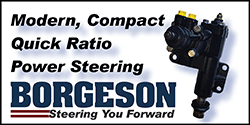RGAZ
Diehard
I agree, and the adjustable in the rear line is acceptable but this could cause the brake light to turn on if the difference is too great and plumbed before the dist block. Ideally you would plumb it after the dist block and switch or you can disconnect the light.
From my actual car, the braking was poor and yes the rear locked earlier until I changed the prop valve. He wanted improved brakes, this will get him improved brakes.
From my actual car, the braking was poor and yes the rear locked earlier until I changed the prop valve. He wanted improved brakes, this will get him improved brakes.
















